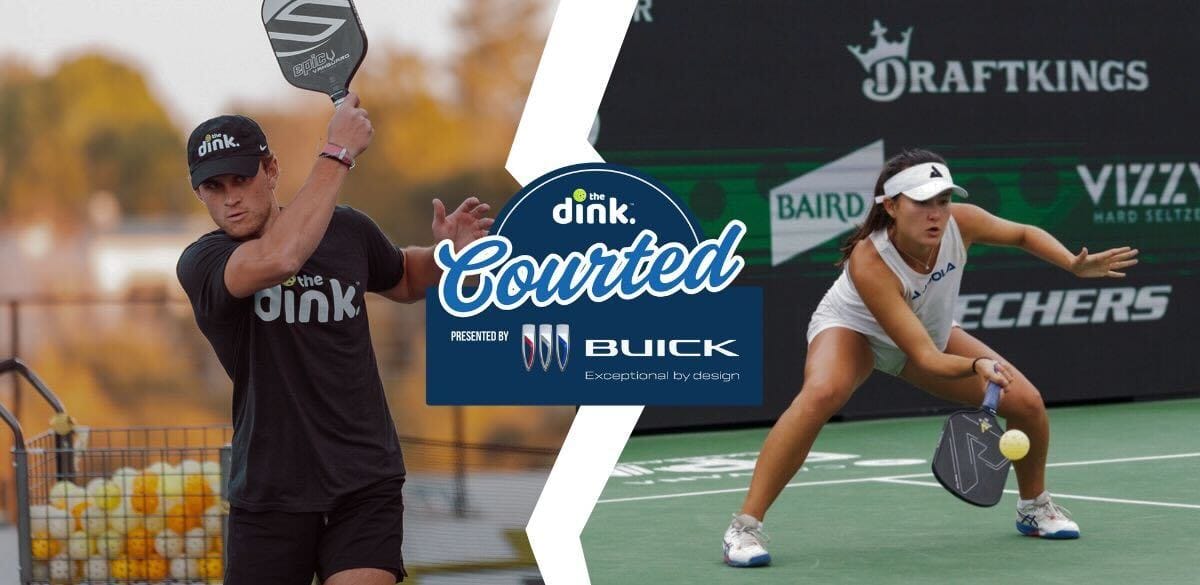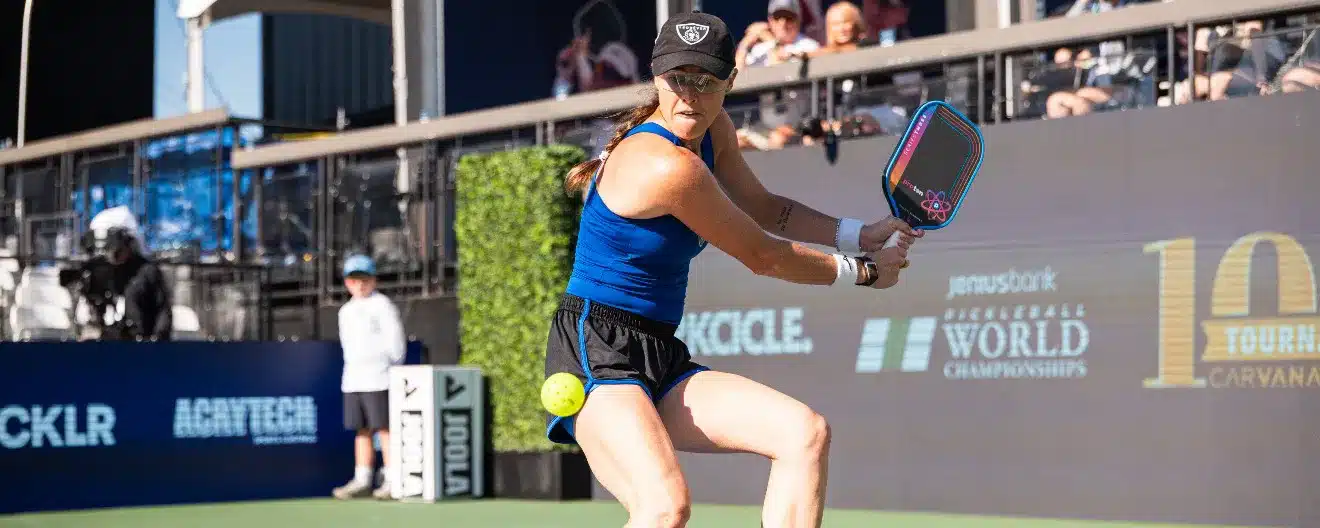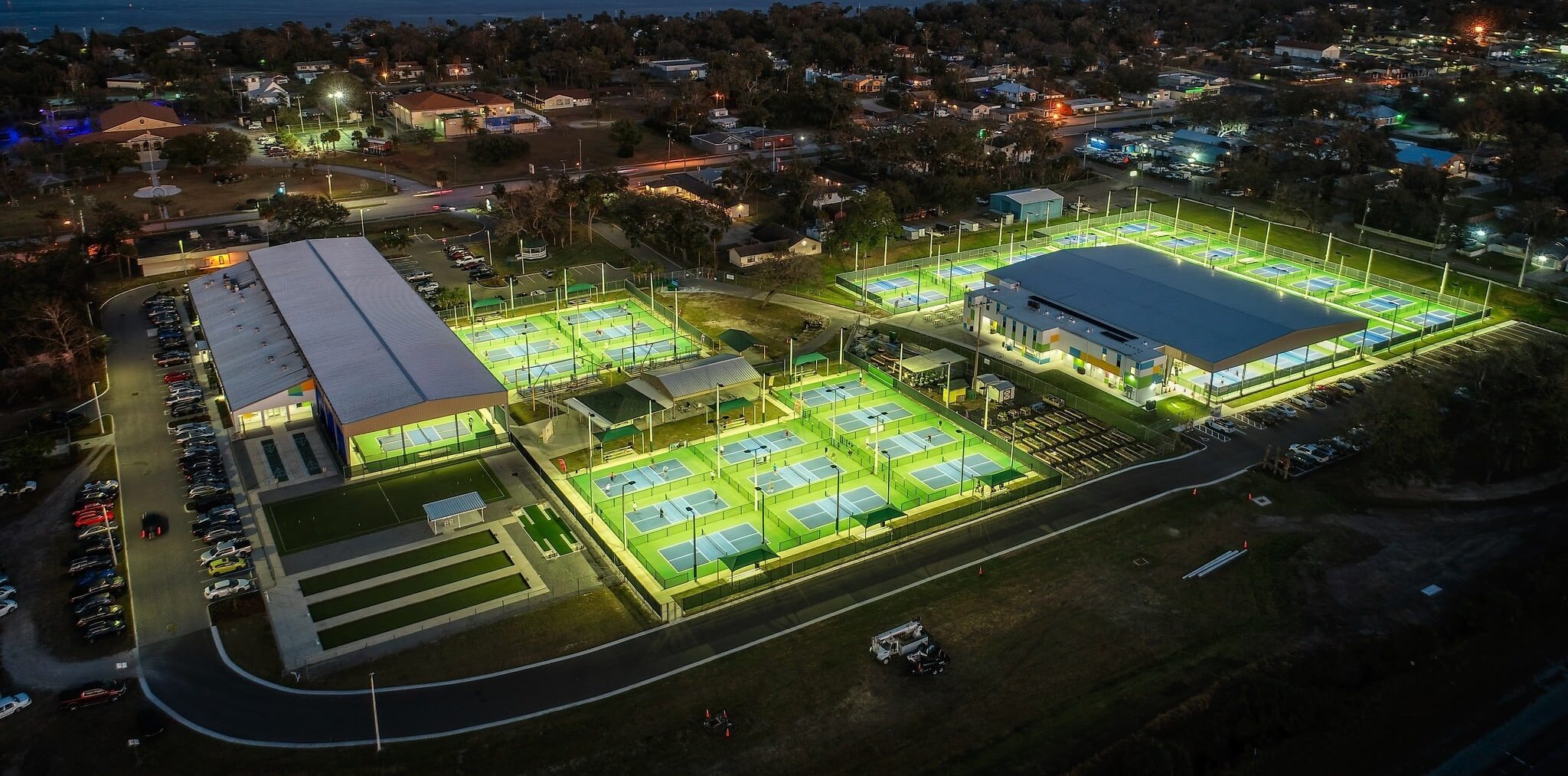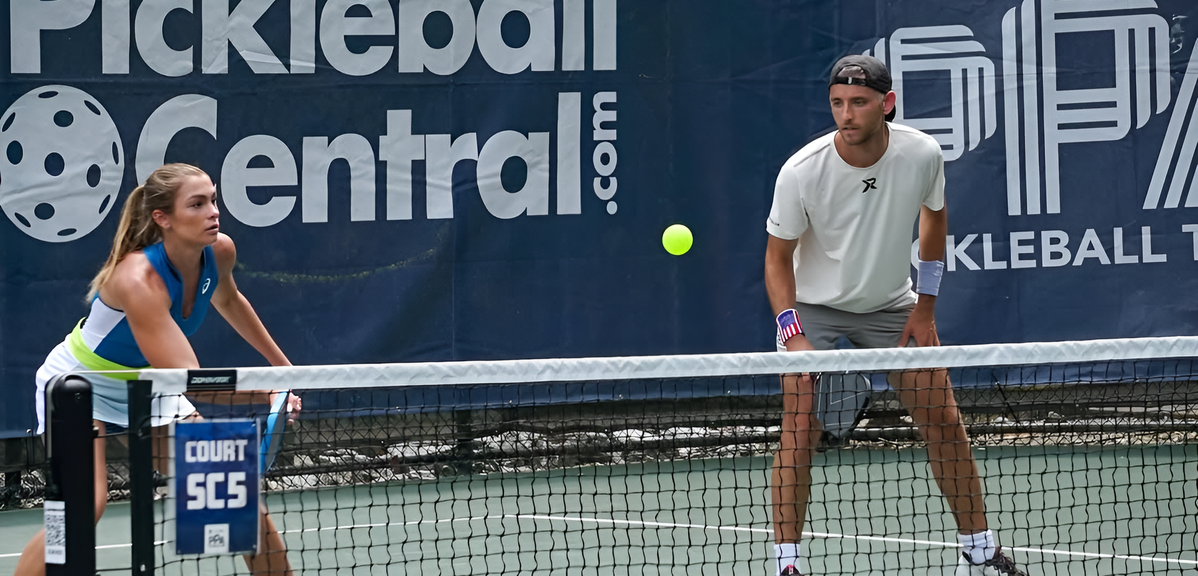Nowadays, if you take a walk down a suburban street or past a park there’s a good chance you’ll hear the signature “pop, pop, pop” of a pickleball being hit over a net. And if you can hear it in the street, then surely those living in the vicinity can hear it too – often for 10 to 12 hours a day, seven days a week.
It's this scenario that's earning pickleball a bad reputation within communities, namely neighbors near courts. Has this stopped players though? Not really... And with more and more players joining the sport every year, the problem is compounding.
Paddletek's been innovating pickleball paddles since 2010, so we've had the privilege of experiencing pickleball’s meteoric rise from a backyard family game to a recognized sport enjoyed by all ages and backgrounds (along with many celebrities). Because of our role in the sport, we also take a great interest in how it impacts our communities, and what can be done to relieve tensions so that pickleball can continue to grow and thrive.
In this article, we look at the facts about how pickleball is sweeping through communities, how much noise it makes, and why. We then discuss what steps can be taken to minimize the noise impact and bring the sound down to acceptable levels, so pickleball players and residents can put down their armor and befriend each other once again.
The Fastest Growing Sport Isn’t the Quietest One
The growth of pickleball in recent years has been nothing short of remarkable. What was started by two men as a fun way to entertain their children while on vacation in 1965 has transformed into a widespread phenomenon in the new millennium, and there’s just no stopping this pop rocket. The Sports & Fitness Industry Association’s Topline Participation Report confirms this with its 2022 findings: Pickleball is the fastest-growing sport in America and participation almost doubled in 2022, with 159% growth over the previous three years.
With millions of people playing pickleball each year, more and more courts keep going up. There are pickleball courts in every US state and every Canadian province, with over 9,500 courts to choose from, and about 66 new courts being built each month. Pickleball courts are everywhere, including parks, schools, community centers, YMCAs, recreation centers, and senior residence communities.
With the rise of courts, we've witnessed the emergence of two factions at odds with each other - those who love pickleball and those on the other side of the pickleball fence: quite literally. Many residents that live next to or near a pickleball court are complaining about the noise of the game and how it negatively affects their quality of life. Consulting engineers agree with residents’ claims. They report that being exposed to the noise made by pickleball day in and day out is a health risk, and pickleball’s noise levels are higher than the acceptable levels set for community and environmental noise emissions in the US and abroad. Some residents are so fed up that they are taking their problems to councils and attorneys to do something about it.
Before we get into the details, let's take a step back and dissect the actual sound.
The Signature “Pop” Sound
The biggest issue with pickleball noise is reportedly the high-pitched “pop” sound made when a plastic pickleball hits the paddle. This sound has been measured by noise control experts and they agree that the pop is categorized as an impulsive sound because it starts quickly and disappears within 2 milliseconds. This short burst is the key component in what is causing all the issues.
A study covered in the Journal of Environmental Psychology found that impulsive sounds, like a dripping faucet, annoy people much more than steady-state sounds, such as an air conditioner running. Impulsive sounds also cause stress and decreased performance, as people simply find it harder to work and relax when they keep getting interrupted by impulsive sounds. What’s more, the impulsive pickleball pop sound is usually between 1,000 and 2,000 Hertz, which is close to a human being’s most sensitive frequency range, so we hear it better and from further away than other games with a soft ball and racquet, such as tennis.
Now here’s the part that makes this even more challenging: Every paddle has a unique sweet spot that gives the player the best result. When a player hits the ball with this sweet spot, the player has the most control over the ball possible, and they get the truest response out of their shot. When the ball hits a paddle in its sweet spot, the paddle vibrates more than when the ball hits it anywhere else. This causes a trampoline-like vibration, where the pickleball bounces back toward the opponent, and you hear the characteristic “pop” sound.
So players are trying to hit the ball in the sweet spot every time to get the best results, which means they’re trying to make the pop sound as much as possible – and unknowingly contributing to the overall noise problem.
To recap - Impulsive sound is what annoys people, and sound frequency is one that humans can hear far away. What makes matters worse is that the part of the paddle every player tries to hit the ball with increases the speed and strength of the noise.
What Makes Pickleball Such a Noisy Sport
The burst and strength of the sound is the result of far more than the sweet spot of the paddle - admittedly this was an oversimplification of a complex formula. The 'noise' is a crescendo of variables, including:
- Court Surface: Many pickleball courts are made of concrete or asphalt, just like a tennis court. The type of pickleball court surface affects the game’s noise levels, with harder surfaces amplifying the sound of the ball bouncing off the ground.
- Player Technique and Strength: The force and technique used by players contribute to the intensity of the noise created. Harder hits and stronger swings make louder sounds when the paddle makes contact with the ball.
- Skill Level and Playing Style: Experienced pickleball players often play fast-paced games and take high-speed shots, which all make more noise than slow games with gentle shots. Also, players with an aggressive style enjoy taking powerful shots (i.e. drives), which produce louder sounds.
- Ball Speed: The speed at which the ball is hit affects the noise generated. Higher ball speeds result in more audible impacts and bounces, contributing to more noise.
- Number of Players: As the number of players on the court increases, so does the frequency of paddle hits and ball bounces. Multiple games being played at the same time or crowded play can intensify the overall noise level.
- Surrounding Environment: The proximity of pickleball courts to residential areas or other structures can also have an impact on the noise created. Sounds from games can bounce off nearby buildings and create echoes, making the noise louder and carrying it further.
- Paddle and Ball Interaction: The materials and design of pickleball paddles, combined with the standard plastic ball used in the sport, influence the noise generated upon impact. Harder paddles tend to produce louder sounds when they make contact with the ball.
Outdoor balls, which are typically harder and have smaller holes, usually create more noise when struck compared to softer, indoor balls. And since outdoor is the most used and certainly the ball part of this issue, its design isn't doing any favors in the community. Though the ball is pretty standard, the pickleball paddle is rather unique. Controlling noise from a paddle perspective would be more challenging - every materials and construction process adds a layer of complexity to the impact on the sound.
Why Are Some Pickleball Paddles Noisier Than Others?
Some pickleball paddles are noisier than others due to the stiffness of materials and the surface area created by assembling the paddle. Denser, thicker paddles that use rigid materials will be louder whereas thinner paddles with softer materials will absorb more of the sound.
Of note, polymer cores in honeycomb patterns will be less noisy than solid alternatives, due to a polymer state that absorbs over less surface area. This makes sense since there is space between the walls of the honeycomb, meaning less surface area is used at contact.
Let’s compare some of the most popular materials used to make paddles and their cores, and rank them from softest to loudest, to see what materials make some paddles louder than others…
The Impact of Material on Pickleball Paddle Noise
The rule of thumb here is the harder the material the louder the sound, with the inverse being true for softer materials creating less noise. So of the most popular materials options in the market today (fiberglass, graphite, carbon fiber), fiberglass paddles would be the quietest since it's the softest of the base materials.
And although carbon fiber is made of graphite, it's actually quieter - that's because carbon fiber is constructed in a different manner, which makes it stronger and harder. So the noisiest of them all are carbon fiber paddles, with the stiffness and responsiveness of the carbon fiber creating a very distinct "pop" sound when it makes contact with the ball. Somewhere between fiberglass, graphite, and carbon fiber, you'll find hybrids that use elements of these different materials.
Pickleball Paddle Cores and Noise
When it comes to the paddle’s core materials and noise, polymer makes the least amount of noise. The softness and dampening properties of the polymer absorb impact energy, so there’s a muted sound upon ball contact. Although not as widely used as poly cores, Nomex cores tend to make the most noise - Nomex is a denser, harder, and more rigid material than the others.
Further to this, the quality of the paddle can play a role in the noise it makes. Higher-quality paddles are typically designed with materials and construction techniques that enhance performance and minimize noise.
Whether you play with the most expensive high-quality paddle on the market or one you borrowed from your retired uncle, you have to wonder if pickleball is louder than any other sport - especially when you consider that many pickleball courts are repurposed tennis courts that never received as much complaint.
How Loud Is Pickleball Compared to Other Sports?
Pickleball is louder on contact than some ball sports, like golf, but on par with the noise created by others, like table tennis and tennis. Baseball, lacrosse, ice hockey, soccer, and volleyball are all generally louder than pickleball.
The table below gives a comparison of the average decibel count upon ball contact in various popular sports:
| Golf | 60 – 70 |
| Table Tennis | 70 – 80 |
| Tennis | 70 – 90 |
| Pickleball | 70 – 90 |
| Baseball | 90 – 100 |
| Lacrosse | 90 – 100 |
| Ice Hockey | 90 – 100 |
| Soccer | 100 – 110 |
| Volleyball | 100 – 110 |
Please note that these values are approximate ranges and vary depending on factors such as equipment, playing environment, and individual techniques. Additionally, the decibel levels mentioned are specific to the impact of hitting the ball and may not represent the overall noise levels during gameplay. For example, obnoxious grunting by tennis players has been known to reach decibel counts of 100 or more.
Looking at the table, it's clear that pickleball makes a moderate amount of noise compared to many sports, but no more noise than some sports that people still enjoy playing and watching. So perhaps what we're dealing with is more a matter of noise perception than actual noise - let's peel the onion on individual perceptions of what noise is, especially in indoor versus outdoor settings.
The perception of noise indoors and outdoors can be influenced by various factors. Indoors, the room's acoustics, soundproofing, proximity to noise sources, and personal sensitivity play a role. Outdoor perception is affected by ambient noise levels, distance from the noise source, open spaces that allow sound to travel, and the presence of natural sounds. Individual preferences and cultural background also impact how people perceive noise in both environments.
The Real Issue Behind the Noise
We'd argue that the perception of pickleball being a noisier sport is a byproduct of its rapid popularity, playing density, and simultaneous contrast. Although not currently backed by any data, here's our theory.
Rapid Popularity - Less Downtime
We've dropped the numbers already in this post, but pickleball is having its moment. In fact, its moment has been going on for years now. More people are hitting the courts than ever before, keeping the rack constantly filled with paddles. Players are waiting in line all hours of the day, not giving any sort of quiet breaks to the courts.
Playing Density - More Ball Contact
You can easily fit two pickleball courts inside of one tennis court, but if you include the runoff areas of a tennis court, you can even fit 4 pickleball courts within the boundaries. So for communities where tennis courts are now being used for pickleball, if one tennis court is now filled with players on four pickleball courts, residents are now hearing four times the contact.
Simultaneous Contrast - Extreme Perception
Have you ever been on vacation and gone from the hot tub to the swimming pool? With the hot tub being so hot, you may feel like the pool is cold by comparison. That’s the same concept here - when pickleball moved into tennis court communities, many of those same courts were being used for tennis, which takes up more space and has fewer players.
With the change in court use, the perception can feel more extreme than it is. Throw in the declining popularity of tennis in the US over the past couple of decades, and the simultaneous contrast becomes even more extreme.
Whether or not pickleball is deemed louder than other sports seems to be relative, but as it spreads through communities, it’s starting to have a much greater effect on residents’ ears, whether they like it or not.
Paddles at Play: How Pickleball Noise Impacts Our Communities
While pickleball brings together people of all ages and builds a wonderful sense of camaraderie, the sport has not been without its fair share of challenges from the communities in which it’s played. As more and more paddles are at play across the country these days, there’s been a growing number of noise disputes, strained relations, and land-use conflicts.
One man in Massachusetts sold his house after pickleball courts were built 350 feet from his front door. He and his neighbors took their plight to court, claiming pickleball courts have harmful and intolerable noise levels, and the noise was creating mental and physical health problems for residents. While in New Jersey there’s a group of pickleball-playing senior citizens causing such a stir that the police have been called out to break up arguments, and now the mayor’s involved.
As mentioned, pickleball has largely taken over the same courts as tennis. This frequent repurposing and the addition of new pickleball-specific courts have led to friction between pickleball players and tennis players. People have even reported seeing fights between tennis players and pickleball players, others have witnessed pickleball players occupying tennis courts until removed by police.
And then there’s the vandalism and threats in Finley, where vandals took to pouring oil over the pickleball courts and leaving threatening notes that pickleball players’ cars will be keyed. The vandals also called tennis players who didn’t stand up to pickleball players “chickens.” Yes - this is real. These are only some examples of communities rising to become activists and pop the pickleball once and for all. So what are our leaders doing about it?
Communities Taking Action Against Pickleball Noise
Some municipalities have introduced enforcable regulations to quiet the court noise, where going above the regulated volume has consequences. Even more, some areas are taking extreme actions, such as removing courts and stopping new courts from being built until the situation has been assessed.
Denver Parks and Recreation removed pickleball from Congress Park after neighbors complained about the noise. An inspector was sent to investigate and found that pickleball noises were over 70 decibels in some nearby residences, and the City ordinance is set for 55 decibels at most. And the City of Centennial approved a temporary pickleball moratorium to give staff time to assess what regulations are needed for outdoor courts and the noise they generate.
It’s not only municipalities that are having to do something about the noise issue. Many homeowners’ associations are stopping pickleball or taking steps to reduce the noise in their community too. Sometimes these actions are sparked by legal disputes, other times these are proactive associations that want to do something about pickleball exceeding the noise provisions in their codes. Sun City is famous for many things, but in the pickleball community they are noted as having a list of green zone and red zone paddles, respectively, those approved and banned based on noise. They go as far as monitoring players to ensure they use approved paddles only.
If people are selling their houses and moving, vandalizing pickleball courts and cars, and going to court to fight things out then one thing’s for sure: This problem won’t go away on its own. A balance needs to be found that gives pickleball players the chance to enjoy their sport, and residents the chance to sit outside and enjoy their peace.
So, how do we keep everyone happy?
A Compromise: Enjoying Pickleball Without Bothering Others
It is possible to keep pickleball courts open and neighbors happy through compromise. By respecting each other and taking steps to address the noise issue, we have the best chance to resolve the disagreements we’ve been seeing in our communities. If residents aren’t bothered by pickleball they will be happy, and more and more people will get to enjoy their favorite sport without feeling guilty about the effect they’re having on those nearby.
What Can Be Done to Reduce Noise in Pickleball?
Pickleball noise can be reduced by playing with high-quality paddles, cushioning court surfaces to absorb more sound, regulating play times, and putting up soundproofing materials or sound barriers. Courts should be built at least 500 feet away from residences, in green buffer zones.
Here are a few helpful suggestions on how to turn down the volume and address noise concerns:
1. Introduce Soundproofing Materials
One common solution is the introduction of soundproofing materials and acoustic baffles, like Acoustifence. Acoustifence is made of a flexible, high-density material. It has excellent sound absorption properties, so it dampens and absorbs sound waves. It is designed to minimize noise transmission through barriers like fences or walls and helps contain the sound generated during play within court boundaries, reducing the impact on neighboring areas and nearby residents.
2. Regulate Playing Times
Regulated timings for playing pickleball could help maintain harmonious relations between pickleball players and residents, striking a balance between the enjoyment of the sport and the well-being of the community.
Giving neighbors time off from the sound of pickleball gives them uninterrupted periods to enjoy their home, without being disturbed. Such regulations provide a clear framework for when pickleball can be played, helping to prevent misunderstandings and disputes.
3. Install a Cushion Court System
One effective way to reduce noise in pickleball is to use a cushion court system. These surfaces are typically made of materials such as rubber or foam, and the cushioned surface absorbs impact, minimizing the sound of balls bouncing. This results in a quieter playing environment, and the surface is softer on players’ knees and joints too.
4. Maintain Space Between Players and Residents
It’s a good idea to keep pickleball courts at least 500 feet away from residences and to surround the courts with green space for better sound absorption. If possible, space courts out so there aren’t several close together. This minimizes the amount of noise coming from a single area. Players can also be mindful of noise and not come in big groups, as more people on or by the courts means more noise.
As you can see, reducing pickleball noise is a shared responsibility. By implementing a combination of these strategies and maintaining an ongoing dialogue between players and the community, we can create a more enjoyable environment for everyone involved.
Finding the Sweet Spot: Taming the Pop and Preserving Peace
In the wake of pickleball’s explosive popularity, we've explored the challenges of striking a balance between player enthusiasm and neighborhood tranquility. As we’ve seen, the noise generated by pickleball play can disrupt the stability in neighboring communities, causing mental and physical health issues, legal disputes, and vandalism. This is a challenge that calls for collaboration, compromise, and mutual respect.
Playing pickleball isn’t just about who is on the court. It’s just as much about who is living, working, or spending time around the court too. As pickleball ambassadors, now’s the time to consider how the sound of our games travels and reaches others, and to take action to minimize any undesirable impacts. By cushioning courts, playing during set times, buying good-quality paddles from reputable manufacturers like Paddletek, and putting up sound barriers, we are doing something to reduce the noise and working with our communities, rather than against them. Let’s invite a new era of pickleball, the most social sport that's also the most respectful.
Anuncie Aqui / Advertise Here
Sua marca para o mundo Pickleball! / Your brand for the Pickleball world!

 English
English  Spanish
Spanish  Portuguese
Portuguese  German
German  Italian
Italian  Japanese
Japanese  French
French  Polish
Polish  Russian
Russian  Netherlands
Netherlands  Hungarian
Hungarian  Turkish
Turkish  Videos
Videos 








 English (US) ·
English (US) ·  Portuguese (BR) ·
Portuguese (BR) ·